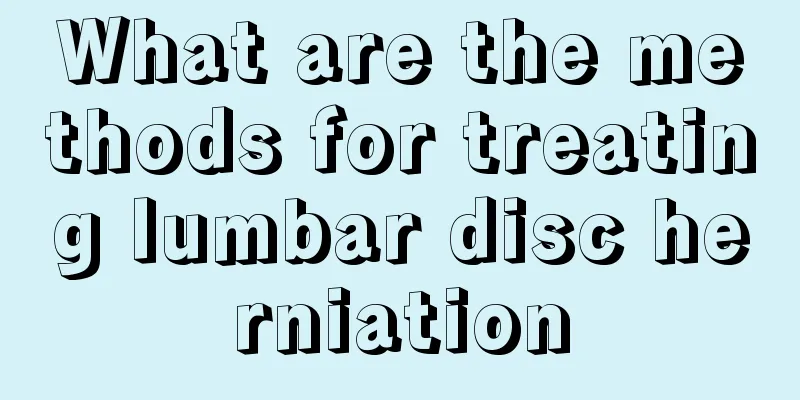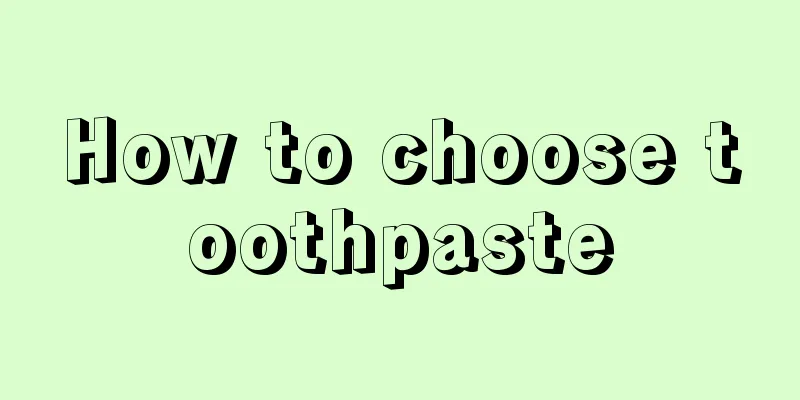What are the methods for treating lumbar disc herniation

|
Lumbar disc herniation is a very common disease in life. This disease causes extremely serious damage to the patient's life, making the patient unable to move freely and unable to sit or stand comfortably. The causes of lumbar disc herniation are very common and are often related to the patient's lifestyle habits. Therefore, changing lifestyle habits can also appropriately alleviate the feeling of pain. However, the most thorough method is still scientific treatment. Lumbar disc herniation involves the spine and cannot be taken lightly, otherwise it will leave lifelong regrets. Let’s take a look at the explanation of how to treat lumbar disc herniation. Lumbar disc herniation is one of the more common diseases. It is mainly caused by different degrees of degenerative changes in the various parts of the lumbar disc (nucleus pulposus, annulus fibrosus and cartilage plate), especially the nucleus pulposus. Under the influence of external factors, the annulus fibrosus of the intervertebral disc ruptures, and the nucleus pulposus tissue protrudes (or falls out) from the rupture to the back or inside the spinal canal, causing the adjacent spinal nerve roots to be stimulated or compressed, resulting in a series of clinical symptoms such as low back pain, numbness and pain in one or both lower limbs. The highest incidence of lumbar disc herniation is at L4-5 and L5-S1, accounting for about 95%. (1) Absolute bed rest: When the disease first occurs, you should strictly rest in bed, and emphasize that you should not get out of bed or sit up to urinate or defecate. This will achieve better results. After 3 weeks of bed rest, you can get up and move around while wearing a waist belt for protection, and do not bend over or hold objects for 3 months. This method is simple and effective, but difficult to stick to. After remission, you should strengthen your back muscle exercises to reduce the chance of recurrence. (2) Traction therapy uses pelvic traction to increase the width of the intervertebral space, reduce the intradiscal pressure, retract the protruding disc, and reduce stimulation and compression on the nerve roots. It needs to be performed under the guidance of a professional doctor. (3) Physical therapy and massage can relieve muscle spasms and reduce pressure in the intervertebral disc, but be aware that violent massage can aggravate the condition and should be used with caution. (4) Supportive treatment: Glucosamine sulfate and chondroitin sulfate can be tried for supportive treatment. Glucosamine sulfate and chondroitin sulfate are clinically used to treat osteoarthritis in various parts of the body. These chondroprotective agents have a certain degree of anti-inflammatory and anti-cartilage decomposition effects. |
<<: What are the side effects of prednisone?
>>: What happens when red blood spots appear on the skin?
Recommend
What are the effects and functions of onion roots?
People often say that eating one scallion in ten ...
What is the cause of leg numbness in late stage bladder cancer
Numbness in the feet in the late stage of bladder...
Are human teeth poisonous?
In daily life, biting yourself with your teeth is...
What are the folk remedies for treating uremia?
The cause of uremia is generally related to the k...
What does high-risk positive mean
High-risk positive means that the patient is foun...
Tips for leather shoes to rub your little toes
Many people feel that their shoes rub their feet ...
How to diagnose small cell lung cancer
How to diagnose small cell lung cancer? As the en...
What to do with cellulitis
I believe that many people do not know what cellu...
The efficacy and function of deer blood powder
I believe many people have heard of deer blood po...
What fruits can reduce internal heat in summer?
There are really many varieties of fruits and man...
What are the benefits of steaming your face with hot air?
There are actually many benefits of using hot wat...
Endoscopic mucosal resection for colon cancer
In recent years, with the discovery of more and m...
Is it accurate to dream while taking a nap at noon
Sometimes, dreaming is actually caused by our sub...
Why does my urethra hurt when I pee?
Under normal circumstances, people do not feel pa...
What are the dangers of nephrogenic diabetes insipidus
The occurrence of diabetes insipidus is basically...









